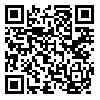BibTeX | RIS | EndNote | Medlars | ProCite | Reference Manager | RefWorks
Send citation to:
URL: http://tumj.tums.ac.ir/article-1-1260-en.html
Background: Urinary tract infection is a common bacterial infection in children and may lead to irreversible renal damage. TC 99-m Dimercaptosuccinic acid renal scintigraphy is the most sensitive method for diagnosing acute pyelonephritis. We designed a study to evaluate the ability of DMSA scan and ultrasonography to detect renal paranchymal lesion.
Materials and Methods: 62 children 1 month to 12 years of age with the first episode of acute pyelonephritis were prospectively studied with DMSA scan and ultrasonography during acute phase of infection. A Voiding Cystourethrogram was performed in 60 children when urine culture became negative. Children with renal paranchymal changes were older at the time of acute pyelonephritis (P=0.04) but no difference was found between the groups with regard to levels of CRP, ESR (P>0.05).
Results: Changes on the DMSA scan were found in 106 (85.5 percent) kidneys of 62 children but ultrasonography showed renal changes in 19.4 percent (sensitivity=20 percent, specificity=83 percent) (Kappa=0.06). Vesicoureteric reflux was found in 14 children (23.3 percent) but 83 percent of the affected kidneys were drained by non-refluxing ureters.
Conclusion: It is concluded that DMSA scan is more sensitive than ultrasonography in detecting renal paranchymal changes in acute pyelonephritis and we found out that renal paranchymal changes after acute pyelonephritis is common, even in those without VUR.
| Rights and permissions | |
 |
This work is licensed under a Creative Commons Attribution-NonCommercial 4.0 International License. |





